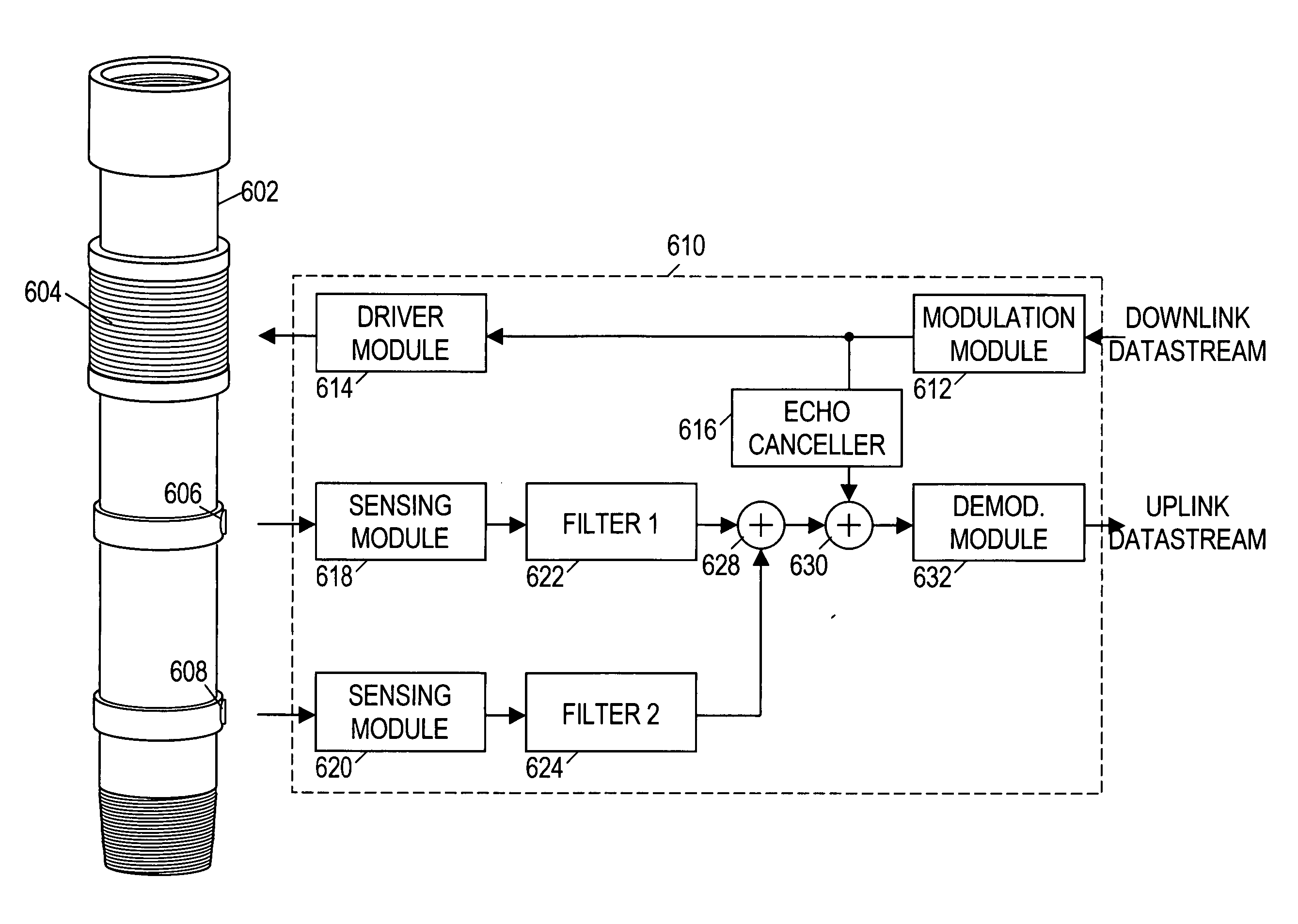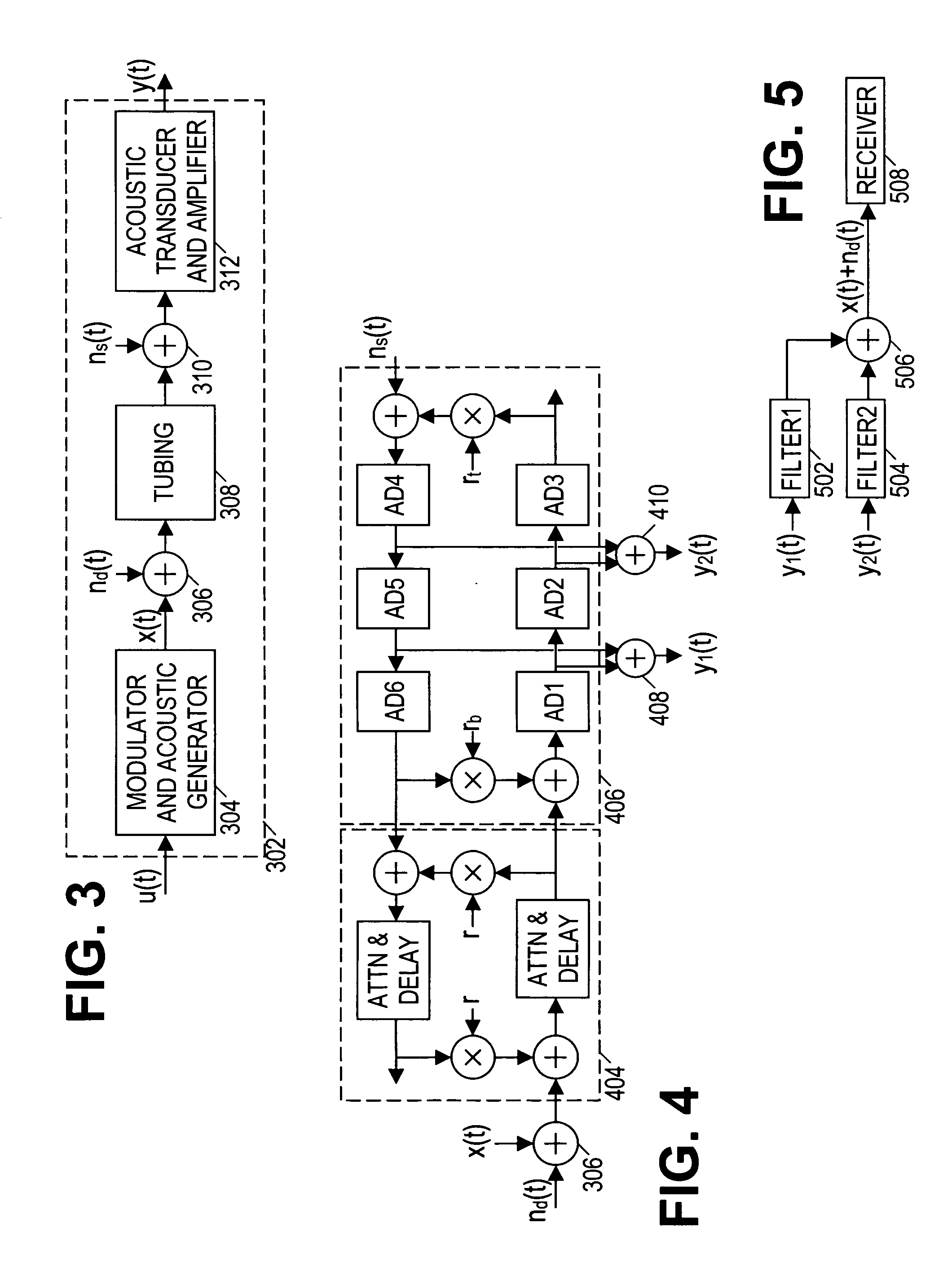Directional acoustic telemetry receiver
a directional acoustic telemetry and receiver technology, applied in the direction of instruments, surveying, borehole/well accessories, etc., can solve the problems of reducing the signal-to-noise ratio of communication signals, affecting the signal quality of communication signals, and requiring the removal of drilling assemblies, etc., to achieve the effect of increasing channel capacity and enhancing the signal-to-noise ratio
- Summary
- Abstract
- Description
- Claims
- Application Information
AI Technical Summary
Benefits of technology
Problems solved by technology
Method used
Image
Examples
Embodiment Construction
Turning now to the figures, FIG. 1 shows a well during drilling operations. A drilling platform 2 is equipped with a derrick 4 that supports a hoist 6. Drilling of oil and gas wells is carried out by a string of drill pipes connected together by “tool” joints 7 so as to form a drill string 8. The hoist 6 suspends a kelly 10 that is used to lower the drill string 8 through rotary table 12. Connected to the lower end of the drill string 8 is a drill bit 14. The bit 14 is rotated and drilling accomplished by rotating the drill string 8, by use of a downhole motor near the drill bit, or by both methods. Drilling fluid, termed “mud”, is pumped by mud recirculation equipment 16 through supply pipe 18, through drilling kelly 10, and down through the drill string 8 at high pressures and volumes to emerge through nozzles or jets in the drill bit 14. The mud then travels back up the hole via the annulus formed between the exterior of the drill string 8 and the borehole wall 20, through a blo...
PUM
 Login to View More
Login to View More Abstract
Description
Claims
Application Information
 Login to View More
Login to View More - R&D
- Intellectual Property
- Life Sciences
- Materials
- Tech Scout
- Unparalleled Data Quality
- Higher Quality Content
- 60% Fewer Hallucinations
Browse by: Latest US Patents, China's latest patents, Technical Efficacy Thesaurus, Application Domain, Technology Topic, Popular Technical Reports.
© 2025 PatSnap. All rights reserved.Legal|Privacy policy|Modern Slavery Act Transparency Statement|Sitemap|About US| Contact US: help@patsnap.com



